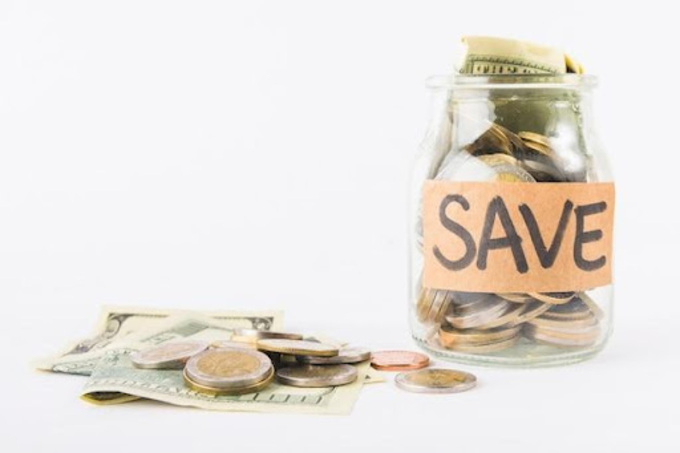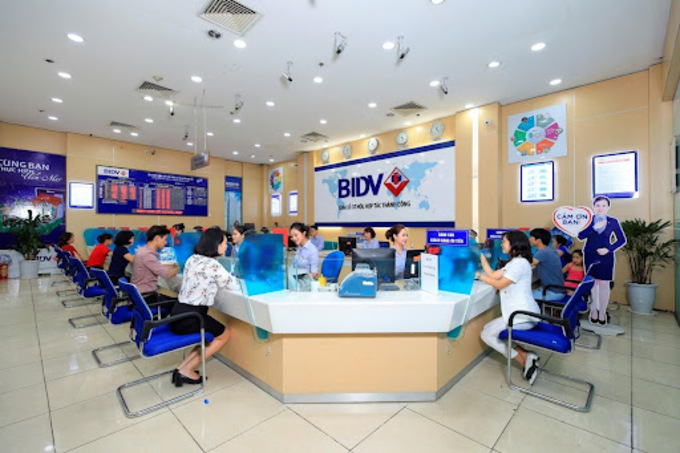What is Term Savings? Should I deposit term savings and where to deposit? In the article below, BIDV will provide overview on term savings so that you can better understand this form of savings and how to distinguish it from demand savings, based on which to make a wise decision.
CONTENTS
- What is Term Savings? Who are most suitable for this form of savings?
- Types of Term Savings
- Term Savings and Demand Savings: 4 differences
- Where to deposit Term Savings?
1. What is Term Savings? Who are most suitable for this form of savings?
Term Savings is a form of savings for a certain period of time agreed upon by the depositor and the bank when his/her savings account is opened. This is a popular form of deposit which is commonly used by individual customers.
When depositing a term savings, the depositor will fully receive the interest incurred only when the term ends. Early withdrawal means a lower interest rate, usually equal to the interest rate applied to demand savings. Therefore, term savings are suitable for those who have idle money which will not be used for a certain period of time.
For example: Retired, civil servants, public employees, white collar workers, blue collar workers... who have a fixed salary. If they have an excess amount that does not need to be used in a certain period of time, they can deposit a term savings.

With term savings, customers will receive the interest initially agreed after the savings term ends.
2. Types of Term Savings
In order to meet the diverse needs of customers, banks have offered multiple choices for term savings, such as:
This form of savings has short and flexible terms. This form is suitable for customers who have frequent need to use money. Those want to learn about term savings also can use this form to decide whether to make longer term savings.
With 1-month term savings, customers will receive savings interest upon maturity at higher interest rate than demand savings. Moreover, customers can flexibly use their money after a short term of savings.
Compared to 1-month term, 3- or 5-month term savings have slightly higher interest rates. If you have idle money for a period of 3-5 months, you should select this form.
Compared with 1-month, 3-month or 5-month terms, 6-12 month term savings have much higher interest rates. The turnaround time is not too long. Therefore, if you have idle money for a relatively long time, you should deposit for a term of 6-12 months. This is also a commonly selected form of term savings.
Savings with a term of more than 12 months usually have a slightly higher interest rate than a 12-month term savings. However, several banks apply preferential policies with higher interest rates to encourage longer term savings. Thus, this seems the most ideal form of term savings with the highest interest rate. Therefore, if you do not plan to use money in the future and are sure of your capital mobilization, you had better select savings with more than 12-month term to enjoy the highest interest rate.
Moreover, savings for a term of more than 12 months can sometimes help you avoid market fluctuations, which may cause interest rate decline in the subsequent years.
For example: The Covid-19 pandemic has adversely affected the socio-economic situation domestically and globally. Therefore, savings interest rates tend to decrease in recent years. If you deposited before the Covid-19 pandemic, the interest rate would not be affected. You can even enjoy a higher interest rate if you deposited for a term of 12 months or less.

Please select appropriate savings term based on your plan to use idle money.
3. Term Savings and Demand Savings: 4 differences
Term savings shares many common features with demand savings. However, these two forms of savings are different as shown in the following table:
|
Item
|
Term Savings
|
Demand Savings
|
|
Term
|
1/3/5/6/12/13/18/24/36…months.
|
N/A
|
|
Interest rate
|
Higher interest rates than demand savings, 2 - 10 %/year on average.
|
Interest rates are lower than term savings, usually ≤ 1%/year.
|
|
Interest payment method
|
At term end or periodically, upfront.
|
Daily or monthly.
|
|
Early maturity
|
Inflexible, customers must notify the bank and only enjoy the adjusted interest rate.
|
Flexible, customers are not required to notify the bank and receive the demand interest rate as originally agreed.
|
The comparison table above shows that term savings have more advantages than demand savings. Such advantages include:
- Safety: With term savings, the savings amount will be secured by the bank for a certain period of time.
- High profitability: The interest rate of term savings is in the range of 2 - 10%/year. This is a much higher interest rate than demand savings. As a result, customer can get a stable income from their idle funds.
- Increase financial efficiency: When you let the bank “hold” your money for a certain period of time, you will limit out-of-control spending. Moreover, you also enjoy a certain amount as interest for investment, house building/repair, purchase of high value items or preparation for unexpected circumstances.
- Less risky: With a term savings, you will receive a fixed interest rate for the entire term of the savings. Therefore, this savings amount will not be subject to financial fluctuations for a certain period of time.

A term savings helps you have a certain amount of money for investment, house repair/building, purchase of high value items
4. Where to deposit Term Savings?
In today’s financial market, many banks offer term savings with attractive interest rates. To select the best bank for term savings, you should bear the following in mind:
- Select a reputable bank: Reputable banks are those with a good reputation in the financial market. These banks often apply the most advanced technology with quick and reliable customer services. Given that, your savings will be secure and safe and any issues will be addressed quickly. At the same time, you will avoid the case where the bank goes bankrupt, resulting in loss of your savings.
- Select a bank with high interest rate for your preferred term: Select a bank with high interest rates will help you get a larger interest on your savings. Therefore, the return on investment will be higher.
- Select a bank with good, dedicated and professional services: If you select these banks, when you have any problems related to your savings passbook, your problem will be solved quickly, dedicatedly and efficiently. This saves your time and increases your satisfaction.
- Select a bank with various offers: These banks will bring you “double” benefits, including higher interest on the savings amount and the savings offers.
Based on the above criteria, BIDV proves themselves one of the best term savings providers. Beyond the above criteria, BIDV also has many outstanding advantages such as:
- Safety: All the awards that BIDV has obtained during its operation show its great safety and security. Security increases significantly when customers also have deposit insurance. Therefore, even if the bank unfortunately goes bankrupt, customers still receive a certain amount of indemnity.
- Various terms: BIDV has many types of terms savings for customers to select from, including 1 month, 2 months, 3 months, 5 months, 6 months, 9 months, 12 months, 13 months, 15 months, 18 months, 24 months, 36 months, etc.
- Flexible withdrawal: At BIDV, customers can withdraw their term savings any time, at any transaction point. However, in case of early maturity, demand interest rate will be applied.
- Quick, convenient service: Depending on their conditions and needs, customers can make term savings at the counter or online.

Term savings at BIDV is a safe and effective investment solution.
Thus, what is Term Savings? In short, Term Savings is a form of depositing within an agreed period of time. With this form of savings, customers will receive higher interest rates than demand savings. To ensure safety, you had better use this service at reputable banks like BIDV.
For more information about term savings service at BIDV, please visit here or contact via hotline 1900 9247.






